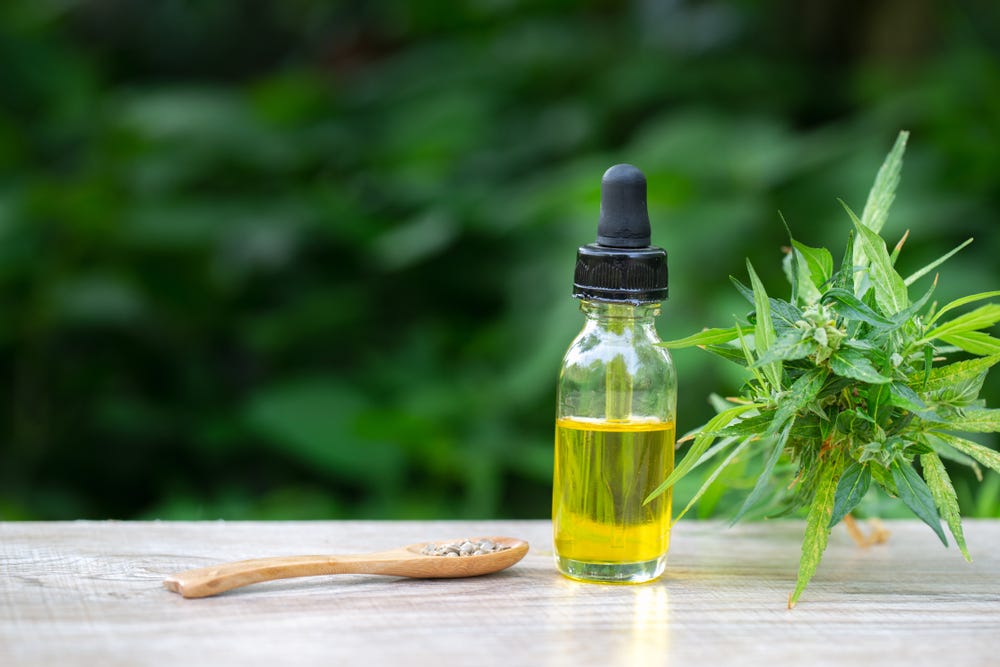With its recent legalization in several nations, the prevalence of CBD oil is booming. Most people take this oil to relieve the pain caused by conditions like arthritis, multiple sclerosis, migraine, and IBS. But are some of these uses endorsed by science? And that delivery process provides the quickest and best pain relief? Keep reading to learn.
What’s CBD Oil?
CBD oil is a therapeutic oil made from the cannabis-derived compound cannabidiol or CBD. Contrary to THC, CBD will not get you high.
The sole FDA-approved usage of CBD oil is for reducing epileptic seizures. But a lot of people take CBD oil to additional investigational, non-proven uses. One of them, the most common one is for pain relief.

People commonly take both CBD and THC-containing medical cannabis for this purpose. In 2 polls on over 3.5k people using them, over 50 percent reported suffering from different debilitating conditions. The ones most commonly handled with CBD — and other cannabis products — include:
- Arthritis (both rheumatoid and arthritis )
- Multiple sclerosis
- Headaches (migraines, audience, and medication overuse)
- Low back pain
- Cancer pain
- Fibromyalgia
- Nerve pain
- Irritable bowel syndrome
Hemp-derived CBD oil is legal in the US and many other countries, while oil derived from bud may contain higher THC levels and is more rigorously controlled.
CBD oil from hemp includes little or no THC. It is approved by the FDA for reducing epileptic seizures.
A mouth spray providing similar quantities of CBD and THC (nabiximols or Sativex) is approved in Canada and many European countries (although not in the US) for the involuntary and often painful muscle contractions brought on by multiple sclerosis. Additionally, it has been widely investigated worldwide for additional painful conditions.
Nabiximols (Sativex) is an FDA-approved extract with comparable amounts of CBD and THC.
CBD Oil for Pain Relief

How Does This Work?
Interaction with all the Endocannabinoid System
The endocannabinoid system consists of two receptors: CB1 and CB2. The cannabinoids naturally created by the body, including the”bliss molecule” anandamide, bind to them. CB1 is chiefly found in brain cells, whilst CB2 is most abundant in immune cells.
Cannabinoids generally — such as anandamide and THC — decrease pain by activating these receptors. In reality, anandamide lack is linked to painful ailments such as migraines, fibromyalgia, and IBS.
CBD is less inclined to bind to CB receptors and cubes rather than activates them. However, CBD indirectly raises cannabinoids in the body: it prevents anandamide from being broken down and eliminated. This probably explains why it seems to enhance the pain-relieving effects of THC.
CBD and cannabis goods are not the only way to enlarge your cannabinoids. You will find 49 additional natural ways to enhance cannabinoids, as far as we’re aware.
Anti-Inflammatory Mechanisms
CBD oil is a powerful anti-inflammatory, which likely explains why it could stop and reduce pain.
As soon as we zoom into its own effects on a cellular level, we see it affects over a dozen anti-inflammatory molecules and pathways.
For starters, CBD triggers receptors that reduce sensitivity to inflammation (TRPV1 and TRPA1) and nerve pain (5HT1A and glycine receptors).
It also blocks the major inflammatory hub NF-kB, activates anti-inflammatory PPAR-gamma, also prevents the elimination of anti-inflammatory adenosine. Subsequently, CBD also lessens the production of many pro-inflammatory messengers (IL-1beta, IL-6, TNF-alpha, IFN-gamma, NO, and prostaglandins).
What is more, it raises the levels of the anti-inflammatory cytokines IL-4 and IL-10.
Finally, CBD enhances the pain-relieving impact of opioids like morphine.
Next, we’ll review if CBD oil functions for over 11 painful conditions. Prepare for a deep dive into the research.
When Does It Work?
Preliminary evidence indicates that CBD oil may help with some painful conditions. However, remember that CBD petroleum isn’t approved for one of these uses and, since it’s marketed as a nutritional supplement, regulations only set manufacturing criteria but do not ensure that they are safe or effective. Speak with your doctor before using CBD oil to prevent unexpected interactions and never use it to replace any proven therapies for pain relief prescribed by your health care provider.
Insufficient Evidence for:
Pain after Medical Procedures
The HPV vaccination may cause several adverse effects such as acute pain, fatigue, and sleep disturbances. In a small trial on 12 girls who developed symptoms after the vaccination, CBD-enriched hemp oil reduced pain and improved energy and well-being.
Persistent pain is an occasional negative impact of kidney transplantation. People normally manage it with painkillers, which can damage the kidneys. In a small trial on 7 people with kidney transplants, CBD was secure and reduced soreness in all but one person.
CBD (injected into both the bloodstream and the mind ) reduced postoperative pain. An oral cannabis extract also reduced postoperative pain in a little trial on 11 people, but it comprised 2x more THC than CBD.
Two little clinical trials (one of which did not use pure CBD however CBD-enriched hemp oil) and two animal studies cannot be regarded as sufficient proof to back up this health advantage. Further clinical research is necessary.
CBD possibly reduces pain after medical procedures, including post-vaccination pain.
Lack of Evidence
Scientists have investigated medicinal cannabis for several other painful problems. Because the sole real studies had mixed effects, tested cannabis training which also included THC, or were done only in animals, they supply no evidence that CBD alone relieves these debilitating conditions in people.
Multiple Sclerosis
In multiple sclerosis, pain is brought on by involuntary muscle contractions and damage to the nerves, muscles, and joints. THC, CBD, and their combination were similarly effective at reducing anxiety and involuntary muscle contractions in a little trial on 24 individuals with this illness.
In mice with multiple sclerosis, CBD reduced inflammation and nerve damage, which slowed the progression of the condition. Its effects may change when CBD is combined with other hemp-derived cannabinoids: THC provided additional aid, while the other compound (palmitoylethanolamide) blocked the favorable effects of CBD.
On the other hand, the evidence to support the effectiveness of CBD alone in relieving multiple sclerosis pain is lacking. An FDA-approved mouth spray with similar amounts of THC and CBD — nabiximols — is much more commonly used with this condition (see”Nabiximols for Pain Relief” below).
Extracts with both THC and CBD may alleviate multiple sclerosis pain, while restricted evidence indicates CBD oil may also be effective.
Arthritis
Arthritis is the harm of joint cartilages due to wear and tear (osteoarthritis) or autoimmunity (rheumatoid arthritis). In a survey on nearly 3k folks using medical cannabis, 21 percent did so to alleviate arthritic pain and frequently reported good results.
Even though the only clinical trial carried out thus far analyzed the spray with CBD and THC (nabiximols), a followup trial is underway to examine the impact of CBD — both independently and followed by THC — on joint pain in people with rheumatoid arthritis and arthritis which mainly affects the spine (ankylosing spondylitis).
CBD (both topical and oral ) relieved pain and inflammation in rats and dogs with osteoarthritis. It was also effective in mice and rats with rheumatoid arthritis.
CBD in conjunction with THC alleviates joint pain; studies analyzing CBD exclusively for arthritis pain relief are currently underway.
IBS and IBD
IBS and IBD both lead to pain, cramps, and diarrhea or constipation. Though similar, IBD contributes to stronger inflammation and damage to the gut lining.
In one poll on over 2k people, nearly 4% utilized medicinal cannabis to reduce digestive pain. In another research on 67 individuals with IBD, 22 percent managed it with cannabis oil.
CBD has not been tested in people with IBS. However, IBS probably causes pain by raising the production of the TRPV1 receptor at the intestines. Although TRPV1 causes inflammatory pain, its stimulation with CBD (or other substances such as the chili pepper chemical capsaicin) reduces pain perception — explaining why CBD can provide IBS pain relief.
Bowel inflammation increases intestinal permeability — i.e.”leaky gut” — that worsens IBD. In a clinical trial on 30 healthy men, CBD reduced intestine permeability. Similarly, it prevented leakiness from inflammatory cytokines in gut lining cells.
Alternately, CB1 activation by anandamide and other cannabinoids decreased inflammation in cells that line the gut. CBD mostly binds to other receptors but may indirectly activate CB1; consequently, CBD may decrease bowel inflammation by raising anandamide amounts.
Nevertheless, CBD had no or little impact on IBD symptoms in 2 clinical trials on 80 individuals.
It had been, however, more effective in rats and mice with IBD. CBD relieved inflammation and tissue damage, presumably decreasing soreness, and enhanced the anti-inflammatory effects of THC.
CBD oil can raise cannabinoid levels and soothe IBS inflammation, though clinical trials are still missing.
Nerve Pain (Neuropathy)
CBD reduced nerve pain — from brain injury, replicated nerve stimulation, anticancer drugs, and diabetes in rats and mice. It triggered three receptors that decrease pain sensitivity (TRPV1, 5-HT1A, and glycine receptors), lowered inflammatory cytokines, and prevented T cells from growing and invading the nerves.
What is more, CBD improved the ramifications of THC in mice.
As is the case for multiple sclerosis, clinical trials more frequently tested the spray combining THC and CBD — nabiximols — to get difficult-to-treat nerve pain.
Extracts with CBD and THC decrease hard-to-treat nerve pain; CBD oil may help also, but clinical research is still lacking to back this up.
Complex Movement Disorders
Complex movement disorders are an umbrella term for many conditions with abnormal movements and postures, largely caused by brain injury. Tourette syndrome, tics, and cerebral palsy fall under this group. CBD-enriched medical cannabis preparations improved pain and reduced involuntary muscle contractions in a clinical trial on 25 children.
Back Pain
In a clinical trial on 11 individuals with back pain even though surgical interventions, cannabis oil with CBD and THC as an add-on treatment reduced pain and improved quality of life. On the other hand, the oil contained 20x more THC than CBD.
In a study on nearly 200 people with chronic pain, 19 percent of whom had low-back pain, medicinal cannabis (with both THC and CBD) decreased pain and opioid use.
Only products with both CBD and THC reduce back pain. There is not any evidence that CBD oil alone will help.
Headaches and Migraines
People often take medicinal cannabis for all kinds of headaches. In a study on over 100 people with migraines utilizing medicinal cannabis, 85% reported reduced pain and pain frequency.
Though CB1 receptor activation by THC might account for most of the effects, CBD may help prevent migraines from stimulating serotonin release — which reduces migraine pain.
On the flip side, CBD can also trigger migraines by triggering the TRPV1 receptor and also discharging a mind vessel-widening protein (CGRP).
In a clinical trial on 13 people with headaches from overusing painkillers, two cannabis preparations (decoction and petroleum ) reduced pain. However, the preparation with the highest THC content (oil) was effective. In accord with this, a synthetic THC analog (nabilone) relieved pain and reduced pain-killer usage in a different trial on 26 individuals.
At a trial of over 100 individuals with cluster headaches, cannabis use was relatively frequent (45%) though it alleviated the strikes by only 25 percent and worsened them in 22%.
CBD alone probably doesn’t reduce migraine and headache pain; THC, on the other hand, is more inclined to assist.
Fibromyalgia
Fibromyalgia can cause widespread pain, possibly because the brain gets more sensitive to pain signals.
At a clinical trial on 20 individuals with fibromyalgia, a vape comprising a cannabis variety with similar THC and CBD content marginally reduced pain. In contrast, vapes with more compounds were unsuccessful.
CBD injected into muscles might be more effective for fibromyalgia, since it relieved pain in rats using a similar muscle disorder (myofascial pain).
Other Kinds of Pain
Some case studies report effective pain control with CBD (mainly combined with THC) in people with:
- Endometriosis
- Two rare inflammatory skin conditions (epidermolysis bullosa and pyoderma gangrenosum)
- Benign tumors at the nerves (schwannomatosis)
Limitations and Caveats
The majority of human research discussed previously all used CBD in combination with varying amounts of THC (either as extracts or special cannabis strains). Animal research indicates CBD oil alone may also alleviate pain, but clinical trials have yet to determine whether it works.
Nabiximols for Pain Relief
As hinted above, the mouth spray providing similar amounts of CBD and THC — nabiximols — is approved in several countries for people with involuntary muscle contractions from multiple sclerosis. It has also been widely researched for other debilitating conditions. Below is a brief summary of the clinical research with this spray.
Effective for:
Multiple Sclerosis
Nabiximols is approved in some countries because of its involuntary muscle contractions from multiple sclerosis. This spray alleviated pain, reduced muscle contractions, and enhanced quality of life within 13 research on over 1k people with multiple sclerosis. Nabiximols revealed continued effectiveness in follow-up studies of up to 52 weeks.
Possibly Effective for:
Nerve Pain
In 6 clinical trials on over 700 individuals with hard-to-treat nerve disease — from recurrent nerve cell stimulation, diabetes, nerve injury, multiple sclerosis, and anticancer medications — nabiximols was powerful and well-tolerated.
Despite its promising outcome, do not forget that nabiximols is not approved for nerve pain by the FDA.
Insufficient Evidence for:
Cancer Pain
In 2 clinical trials on over 400 people with advanced cancer and difficult-to-treat pain, nabiximols relieved pain better compared to placebo whilst THC alone did not. Low and moderate doses have been more effective and better tolerated than higher doses. The spray remained powerful in the long term without needing to increase the dose or take different pain-killers.
But, two recent trials on over 600 people from the united states and Europe discovered nabiximols unsuccessful for cancer pain management in both classes. It merely improved the quality of life in America, possibly because the US center used lower opioid dosages or had another distribution of cancer types.
Because the ramifications of nabiximols on cancer have just been tested in a few clinical trials with contradictory results, the evidence supporting its use in this situation is insufficient until further clinical research is carried out.
Arthritis
In a small study on 58 individuals with rheumatoid arthritis, nabiximols decreased pain and morning stiffness while improving sleep caliber.
Larger, more robust clinical research should confirm this preliminary finding.
CBD Oil Dosage for Pain Relief
Dosage
Because CBD oil isn’t accepted for pain relief, there is absolutely no official dose. Users and nutritional supplement manufacturers have created unofficial doses based on their experience.
Most clinical studies analyzed CBD with THC. The only clinical trial with CBD exclusively for pain after kidney transplant used a high dose: they began with 100 mg/day and raised the dose to 300 mg/day for more than 3 months.
The dosages normally used are lower and dependent on the recommendations from users and manufacturers. The optimal dose will depend on your:
- Bodyweight: heavier people will require a higher dose to experience pain relief.
- Sort of pain: severe or chronic pain will generally require a higher dose than mild pain.
- Tolerance: frequent CBD users may develop tolerance over time and will need to improve the dose.
With this in mind, the Suggested CBD doses (taken 1x-3x/day) are:
- Light people (under 135 lbs): 10-17 mg
- Medium-weight people (135-200 pounds ): 15-25 mg
- Heavy people (over 200 pounds ): 22-45 mg
Consult your physician about the top starting dose when using CBD oil for the very first time. Begin with a low dose and monitor your response. Should you tolerate CBD oil well, increase the dosage gradually until you achieve the desired effect.
How to Take
CBD oil comes in various forms:
- Oil tinctures
- Capsules and pills
- Edibles (gummies and lollipops)
- Teas
- Mouth sprays
- Vaping oil
- Topical lotions, salves, and lotions
- Patches
Your form of choice will depend on your type of pain:
- Capsules, edibles, and teas release the CBD more slowly but their consequences also last longer. They are preferred for chronic ailments.
- Vaping, mouth sprays, and oil tinctures are absorbed more quickly and are preferable in case of acute or episodic pain.
- Topical forms act locally and are mainly used for joint and muscle pain.
How Much Time Does It Take to Work?
The time until you may observe pain-relieving effects will be dependent on the delivery process — which determines the pace at which CBD is released into the bloodstream. You can anticipate the effects to Begin kicking in after approximately:
- Vaped or smoked: 5-15 min
- Mouth sprays and oral tinctures: 15-30 min
- Cosmetic capsules, edibles, and teas: 30-180 min
- Topical forms: 30-120 min
Finding the Best CBD Oil for Pain Relief
Tips
In addition to choosing a CBD oil adjusted to your budget (you might want to calculate the price per mL or even is to compare different brands), you also need to assess the item quality. Read here about how to pick the best CBD oil in detail.
Out of various factors, CBD articles is the most significant one: make sure that the oil contains enough CBD, clearly mentioned on the tag. If you would like to avoid unwanted effects of THC, choose products with little or no THC. Otherwise, you may prefer the oil to contain THC too to acquire some additional pain-relief consequences.
Legality is also significant. Unlike marijuana-derived goods, hemp-derived CBD oil is lawful in most US states and in many countries around the world. Go for CBD oil from hemp to keep on the safe side and browse through this post to make sure that you’re not breaking any laws.
Reviews
The opinions expressed in this section are solely those of CBD oil consumers that may or may not have medical or scientific training. Their testimonials don’t reflect the opinions of us. We don’t endorse any particular solution, service, or treatment.
Don’t consider user adventures as medical advice. Never delay or disregard seeking professional medical advice from your doctor or other qualified healthcare providers due to something you’ve read on this website. We know that studying person, real-life experiences can be a very helpful resource, but it is not a replacement for professional medical advice, diagnosis, or therapy from a qualified healthcare provider.
Most people used CBD oil for debilitating conditions such as multiple sclerosis, arthritis, nerve pain, fibromyalgia, IBS, and lower back pain. Users were normally pleased and the majority of those reported pain relief.
In some cases, the users complained that the oil didn’t work for them. Adverse effects most frequently reported in negative testimonials included upset digestion, dry mouth, headache, and fatigue. Depending on the brand and kind of supplementation, a few users complained about its high price, poor customer service, and poor taste.
CBD Oil Side Effects
CBD Alone
Remember that CBD oil is an insufficiently researched supplement using a comparatively unknown safety profile. The list of negative effects is, therefore, not a definite one. You should consult your physician about other possible side effects based on your health condition and possible medication or supplement interactions.
CBD is generally well-tolerated and causes several, normally mild adverse outcomes. Those most commonly reported by people using it for pain relief include:
- Dry mouth
- Euphoria
- Hunger
- Dizziness
- Drowsiness and fatigue
- Nausea
CBD & THC Extracts
In the Event of nabiximols (extract with CBD and THC), the most frequent adverse effects observed in clinical trials contained:
- Dizziness, vertigo, and feeling drunk
- Drowsiness
- Confusion and disorientation
- Disturbances in attention and memory
- Disposition changes
- Dry mouth
- Bad taste, nausea, and vomiting
- Diarrhea or constipation
- Headache
Although some of these (such as confusion, disorientation, disturbances in attention and memory, or feeling drunk) may result from THC, it’s important to note that CBD partly opposes its effects by blocking CB receptors. Nabiximols — and other reparations with a balanced CBD and THC composition — may have fewer unwanted side effects than others with high THC levels.
Takeaway
CBD oil can relieve pain by increasing anandamide, the natural cannabinoid bliss molecule. Contrary to THC, it doesn’t overwhelm the cannabinoid receptors or get you high.
CBD oil can help with mild multiple sclerosis pain, nerve pain, arthritis, and IBS. Its negative effects are mild and most men and women tolerate it well. If you require instant pain relief, vapes may be preferable. For a more stable CBD supply, select capsules. If your pain is localized — like in your lower back or knee joints — you may benefit from lotions and other topical CBD formulations.
But, THC and CBD together provide greater pain relief. An infusion called nabiximols (Sativex) contains equivalent levels of THC and CBD. It’s been accepted for multiple sclerosis pain in some countries — excluding the US. It also relieved arthritis, heart, and cancer pain in clinical trials.





